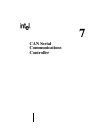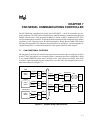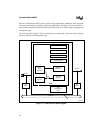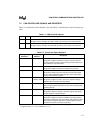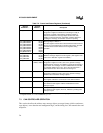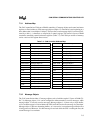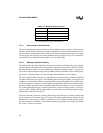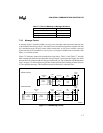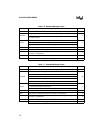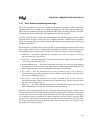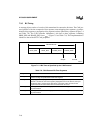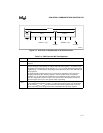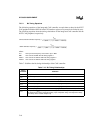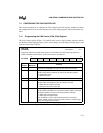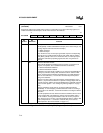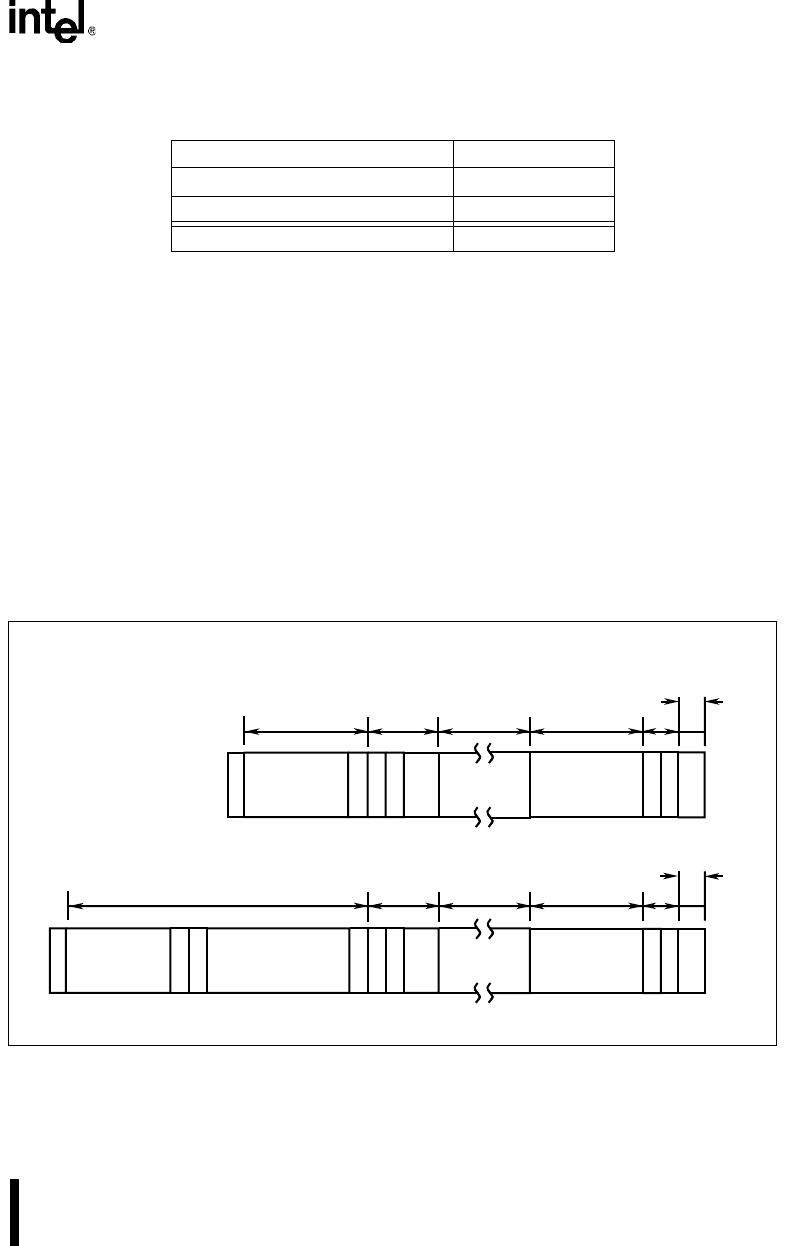
7-7
CAN SERIAL COMMUNICATIONS CONTROLLER
7.3.3 Message Frames
A message object is contained within a message frame that adds control and error-detection bits
to the content of the message object. The frame for an extended message differs slightly from that
for a standard message, but they contain similar information. A data frame contains a message
object with data to be transmitted; a remote frame is a request for another node to transmit a data
frame, so it contains no data.
Figure 7-3 illustrates standard and extended message frames. Table 7-6 and Table 7-7 describe
their contents and summarize the minimum message lengths. Actual message lengths may differ
because the CAN controller adds bits during transmission (see “Error Detection and Management
Logic” on page 7-9). After each message frame, an intermission field consisting of three recessive
(1) bits separates messages. This intermission may be followed by a bus idle time.
Figure 7-3. CAN Message Frames
Table 7-5. Effect of Masking on Message Identifiers
Transmit message object ID 1 1 0 0 0 0 0 0 0 0 0
Mask (0 = don’t care; 1 = must match) 0 0 0 0 0 0 0 0 0 1 1
Received remote message object ID 0 0 1 1 1 1 1 1 1 0 0
Resulting message object ID 0 0 1 1 1 1 1 1 1 0 0
18-bit
Identifier
11 bit
Identifier
S
O
F
S
R
R
I
D
E
R
T
R
r
1
r
0
0–8 Bytes
15-bit
CRC
DLC
11-bit
Identifier
S
O
F
R
T
R
I
D
E
r
0
0–8 Bytes
15-bit
CRC
DLC
End of
Frame
Ack
F.
CRC
Field
Data Field
Control
Field
Arbitration
Field
End of
Frame
Ack
F.
CRC
Field
Data Field
Control
Field
Arbitration
Field
A2599-01
Standard Frame
Extended Frame



